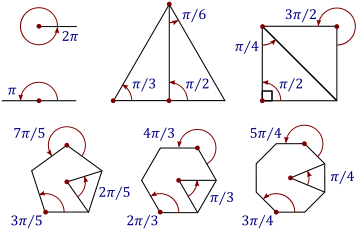The radian, until 1995, used to be the standard unit of angular measurement.
Nevertheless, this unit of measurement is often used in many fields of
mathematics. Even though its unit symbol
may be "radian" or "rad," it is usually omitted. Therefore,
radian is called a dimensionless quantity.
When you need to convert radians into degrees, you must multiply the value you have by 180 and the divide the result by pi. If you have your values and degrees, and wants to convert to radians, take your values and multiply by pi, then divide by 180.
The radian measure was first used
in opposed to the degree of an angle by Roger
Cotes in 1714. However, the term radian was only used in print form on 5th
June of 1873, in examination questions set by James Thomson, at Queen's College, Belfast.
 It is important to understand the concepts of radian measures because, in calculus, angles are universally measured in this unit. The
reason for this is because it can lead to a more elegant formulation of a number of important results than
degrees of angles would, since radian is a pure measure based on the radius of
the circle. When the results in analysis involves trigonometric functions for
example, radians are used in order to have the results expressed in a more
elegant and simple way. To conclude the thought: "Degrees are more practical,
but radians are more elegant and mathematically easier."
It is important to understand the concepts of radian measures because, in calculus, angles are universally measured in this unit. The
reason for this is because it can lead to a more elegant formulation of a number of important results than
degrees of angles would, since radian is a pure measure based on the radius of
the circle. When the results in analysis involves trigonometric functions for
example, radians are used in order to have the results expressed in a more
elegant and simple way. To conclude the thought: "Degrees are more practical,
but radians are more elegant and mathematically easier."
Nenhum comentário:
Postar um comentário